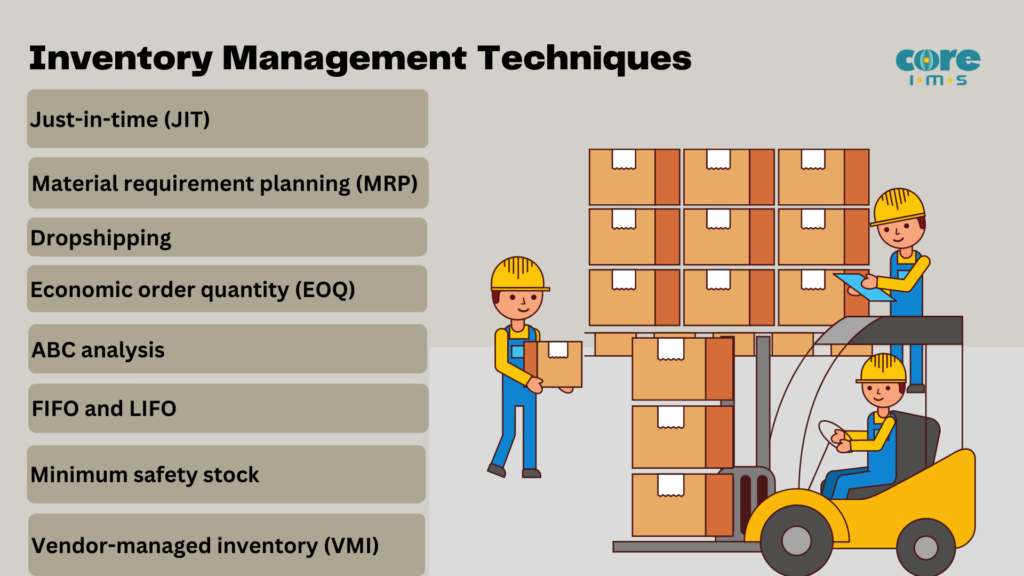8 Most Effective Inventory Management Technique

There are several inventory management techniques that businesses can use to optimize their inventory levels and reduce costs. Some of these techniques include:
- Just-in-time (JIT) inventory management
JIT is a technique that involves ordering inventory just in time to meet customer demands. In the Just in Time method of inventory control, the company keeps only as much inventory as it needs during the production process. This can help businesses to avoid holding excess inventory and reduce the costs associated with storage.
- Material requirement planning (MRP)
MRP is a systematic approach to managing the production process by ensuring that the right materials are available at the right time and in the right quantities. It is a method for calculating the materials needed to produce a final product, and it is widely used in manufacturing industries to manage inventory and production schedules.
- Dropshipping Method
Dropshipping is a retail fulfillment method where a business doesn’t keep the products it sells in stock. When a store sells a product, it purchases the item from a third party—usually a wholesaler or manufacturer—to fulfill orders. When a business owner receives an order from a customer, they contact the supplier, who then ships the products directly to the customer’s doorstep. In dropshipping inventory management businesses are able to sell products they don’t physically have in stock.
- Economic order quantity (EOQ)
EOQ is a formula that businesses can use to calculate the optimal order quantity for a given product. By ordering the optimal quantity, businesses can reduce the cost of ordering and holding inventory.
- ABC analysis
ABC analysis stands for Always Better Control Analysis is a technique that involves categorizing inventory based on its value. ABC method is used when your inventories are not of equal value. It identifies the most and least popular types of stock. This can help businesses to focus their inventory management efforts on the most valuable items and reduce the risk of stockouts.
- FIFO and LIFO
First in, first out (FIFO) method means that the oldest unit of inventory is the sold first.. Last in, first out (LIFO) method considers that prices always rise, so the most recently-purchased inventory is sold first.
- Minimum safety stock
Minimum level or safety stock level is the level of inventory, below which the stock of materials should not be fall. If the stock goes below minimum level, there is a possibility that the production may be interrupted due to shortage of materials. Safety stock, also known as buffer stock, is an important part of inventory management. It helps to protect organizations from supply chain disruptions and unexpected increases in demand, ensuring that there is always an adequate supply of goods when needed.
- Vendor-managed inventory (VMI)
VMI is a technique in which the vendor is responsible for managing the inventory levels of a particular product. This can help businesses to reduce the time and resources required to manage inventory.
Conclusion
Effective inventory management is essential for businesses of all sizes. It helps organizations decide what and how much to order and keep track of their inventory purchases and sales to ensure enough stock to fulfill customer orders in timely and cost-effective manner. Today organizations are using inventory management software such as CoreIMS inventory management system to track, manage, and coordinate their inventory across multiple levels and multiple warehouse locations. By optimizing inventory levels, businesses can reduce costs, improve customer satisfaction, and free up resources to focus on other areas of the company. CoreIMS offers accurate real-time inventory information from anywhere. Click here to book a free demo today or contact us at: info@corepartners.com.
